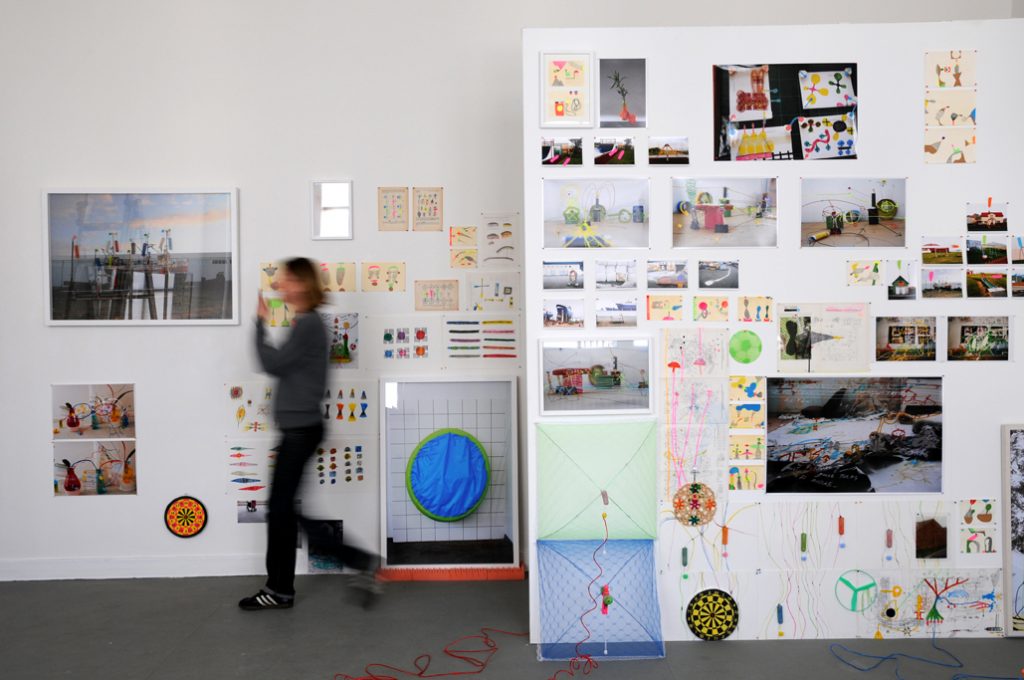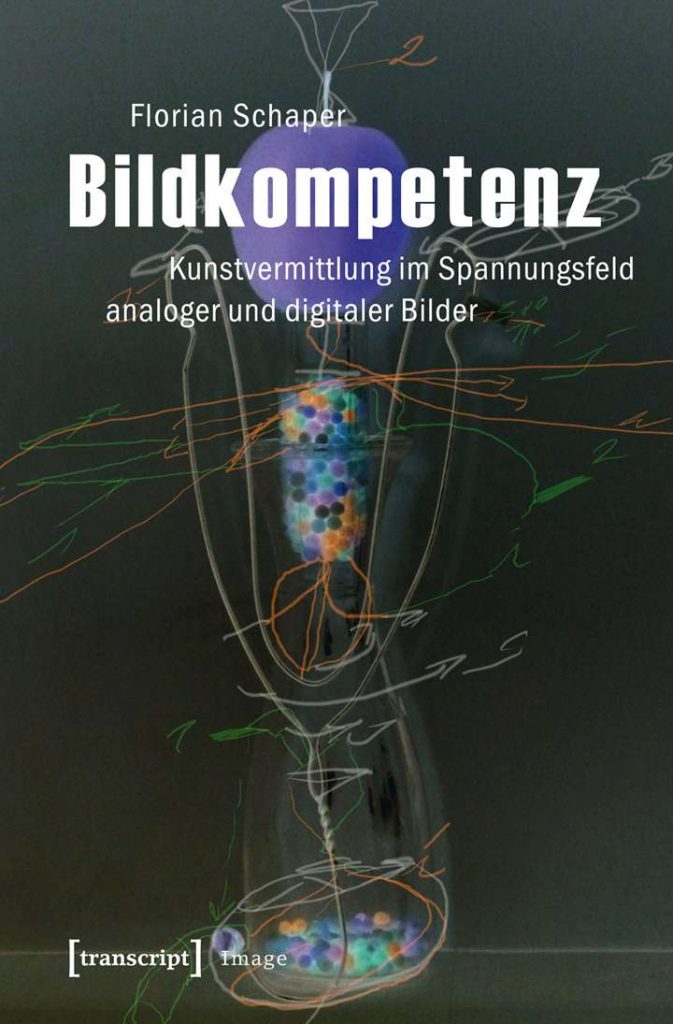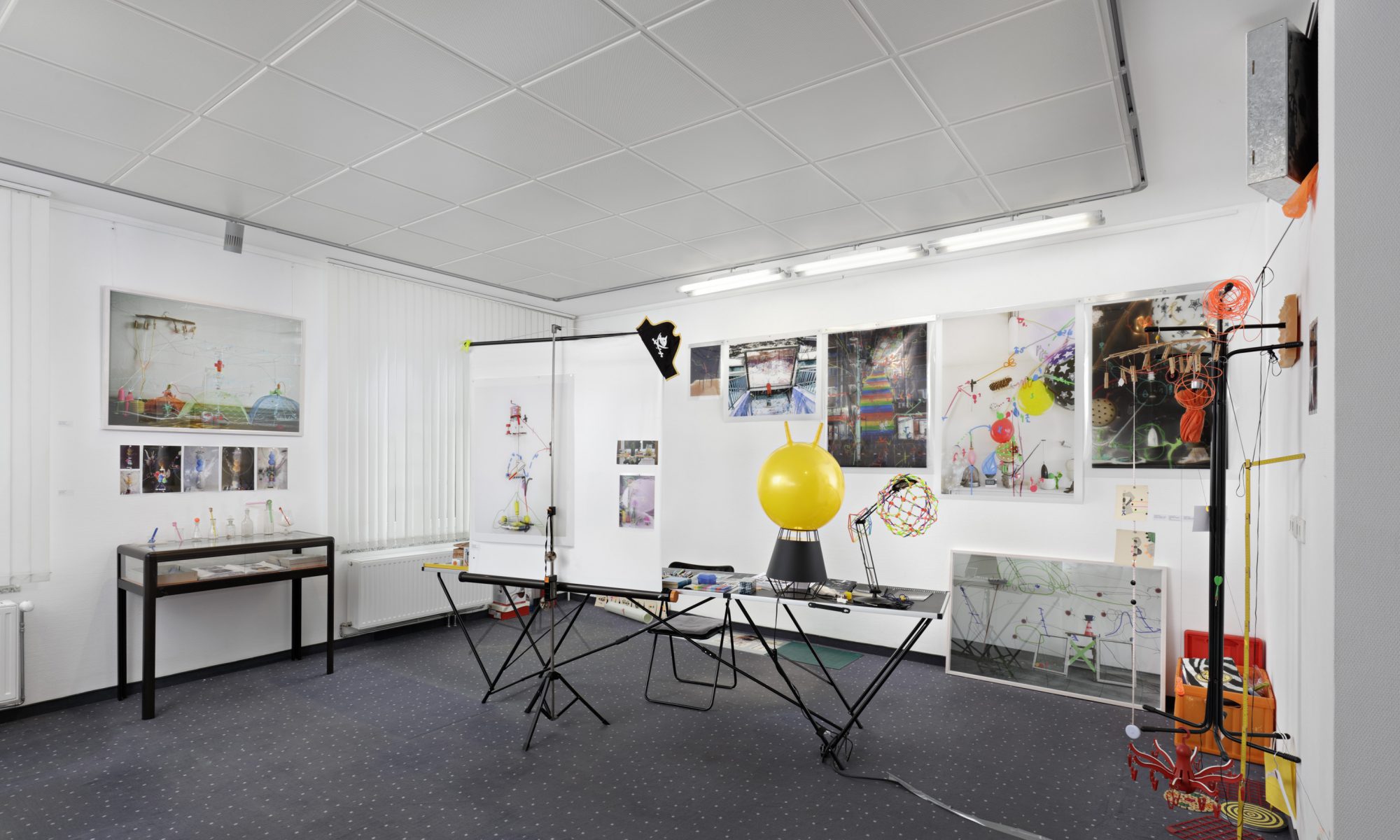
BETWEEN OBJECTS AND MEDIA
The work of last year’s winner of the art prize „Junger Westen“, Susanne Britz, functions at the intersection of photography, drawing, installation and sculptural elements.
Susanne Britz creates proliferating associative networks with drawings, postcards, overpainted prints, everyday objects such as plastic water pistols, hair curlers and colorful clotheslines, which creep from the wall into the room. The starting point for her work is often the drawing, in which an idea is initially provided form, so that in the following steps it can be thoroughly developed and played out in a wide range of colors. During this process, sculptural forms occasionally emerge; they seem to become independent and proceed through a three-dimensional metamorphosis in the room. Reality becomes a freely accessible physical design parameter which is appropriated and imbued with individual interpretations. In some photos, text appears in the form of comments, like diary sketches, accompanied by colorful lines which create and show a new unfamiliar relationships between the objects. Cryptic systems of enumeration seem to reference secret formulas which allow reality to be categorized. In this context, the individual piece functions as a sort of platform, from which one can venture an associative leap to a further node of meaning and possible perceptions. Complexity and diversity, recognized foundations of all of life’s interconnections, are made visually perceivable certainties through the looping and connecting of various levels of form and meaning.
“For me, drawing means to formulate”, Susanne Britz says, “and thereby to connect the real with the virtual, the inner- with the outer-space.” This is also achieved by the viewer who engages with the dense interplay of interconnections and rather than seek concrete meaning, strives to explore the space between the elements.
Dr. Uwe Schramm, speech at Susanne Britz’s opening in the Kunsthaus Essen, 2010
Excerpt from catalog „punktlandung – Susanne Britz“, Blurb, 2015

Cover design: Susanne Britz
FORMULADRAWING
Various complementary analog and digital strategies flow together in Susanne Britz’s work, helping to inform the development of her unique interpretation of the picture plane, integrating graphic, but also painterly imagery, as well as installations.
Susanne Britz adds graphical layers over digital photos in her digital works. In this way, new levels of meaning emerge through a sort of digital palimpsest-process.
The drawings are not created with a pencil or pen, but rather with a computer mouse; the medium is not paper, rather a digital photograph. By means of the drawing,
Britz analyses the digital photo, which often depicts a type of experimental set-up, thereby taking into account the physical laws inherent to the experiment.
These experimental set-ups are comprised of still lifes constructed by the artist as well as scenes observed from everyday life which she compresses and secures in the form of an image with a camera. These images are imbued with a sense of everyday artificiality, revealed both in the arrangement and the utilized objects which reflect our technologized leisure- and trash-culture.
The drawn lines analyze, categorize, ask questions, and paraphrase the photographically fixed experimental setup. The line appears irregular, agitated – as if drawn by an unpracticed child’s hand. This quality can be traced back to the fact that a computer mouse was used as the drawing implement rather than a graphics tablet. The mouse does not allow exact, clean lines. Yet this superficial shortcoming is part of the artistic strategy. The waiving of perfection is a part of the paraphrasing and emphasizes the impact of simple, elemental pictorial processes. This can be understood as an expression of freedom while engaging technical processes. The lines create parallels, circles and arrows, but also more complex three-dimensional forms. One gets the impression that Britz conceives the image as a room, in which she defines flow directions and makes these visible for the viewer. This also corresponds with the artist’s description, which compares the form of the drawing at the computer with a type of blind drawing, where the eye glides through the digital representation of the room while the mouse simultaneously follows along, nearly seismographically, as a reflex. Britz’s layered drawings create new pictorial dimensions in which the laws of physics seem to be rewritten. References are made, but remain cryptic and hence unclear. Thus the interpretation of the images is allowed a degree of freedom; the works that Britz creates are consequently invested with a structure enabling open-ended engagement. The drawings also possess a significant painterly quality due to the colorful content of the photographs and the often equally colorful layered drawings. Colors inherent to the photograph are picked up by the mouse and further developed. In this way it becomes clear that the photograph is now conceived as a drawing, and its development continues in this context.
Occasionally the strong colors of the lines also remind the viewer of spatial markings. The concept of categorization and marking is again asserted through the choice of pictorial elements such as numbers and letters. The language of scientific formulas is referenced in fragmentary form, thereby suggesting that the fundamental scenario is represented as an experimental setup with unknown exterior dimensions.
Elements hang, stand, lie or straddle the pictorial space. The drawing emerges as a unique, digitally inscribed set of instructions. This quality is also evident in Susanne Britz’s installations. These remind the viewer of drawings, creeping into the room and once having assumed spatial form, expressing the laborious processes which did not find enough space in the drawings. The formulistic drawings lead the view, carry one along, but then alter the path since no formula exists that can or tries to explain the drawing. It is within this void that a philosophical perspective of the objects placed in the drawing emerges within Britz’s work.
Dr. Florian Schaper
Excerpt from catalog „punktlandung – Susanne Britz“, Blurb, 2015
